What Companies Are Doing TODAY to Rank High on AI Engines
How to use Generative Engine Optimization for your GTM strategy
Dear GTM Strategist!
After the unexpected success of the first Generative Engine Optimization (GEO) article that instantly became one of the most popular posts here in 2025, I wanted to double down on what you are apparently interested in.
While we are still figuring out how to call the new SEO in the age of AI…
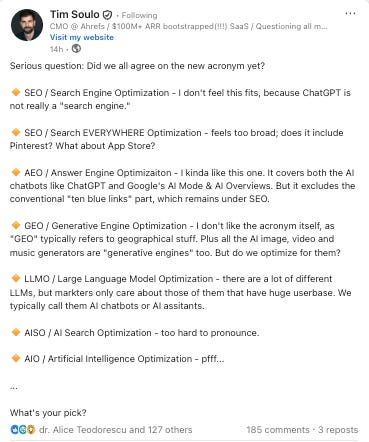
…some champs in my network managed to unlock a massive new revenue opportunity by being one of the first hits for AI searches in their category.
Today, I share some of their GEO playbooks with you, and I prepared a checklist on how you can elevate your GTM traction and become one of the first companies to unlock this massive opportunity to become “go-to” entities in the era of zero-click customer journeys.
You’ll learn:
How to analyze your brand and how well or poorly competitors are doing on AI engines using Brand Radar 2.0 by Ahrefs
3 case studies of how some AI agent tools became leaders in their category
I’ll share my checklist for GEO optimizations that I use with my clients
This time, no “what is GEO” - fundamentals are well covered here. This time action only, so let’s get tactical! ✌️
Understand the space you compete in: Brand Radar
Every great GTM playbook begins by observing what works well for others, generating intelligence, and then acting based on that insight.
GEO used to be a black box, but new tools are now increasingly enabling visibility into how the answers are shaped in ChatGPT, Google AI Summaries, and other AI chatbots.
I analyzed some of the top AI agents brands in my space to determine which ones index well for GEO, allowing me to reverse-engineer their best practices.
Here is a tl;dr version:
Next, I wanted to dive deeper - what exactly are these companies doing so right?
How did they crush the AI ranks - often against all odds, since some of them are not category leaders and are competing with billion-dollar competitors with massive content, SEO and search budget 🤷
I wanted to learn exactly what they did and how you and I can replicate their success.
How AI search really differs from traditional search
The biggest mistake I see right now?
Founders assuming their SEO strategy will “just carry over” into AI search.
It won’t.
Here’s why the new rules of the game are so different:
From clicks → to citations
Traditional search engines give you a buffet of links. The game is to win clicks and position as high as possible.
In AI search, there are no blue links to compete for - the prize is to be mentioned directly in the answer. A link is sometimes just a bonus.From websites → to answers
SEO’s mission has always been: “bring traffic to your website.”
GEO flips that: even if users never land on your domain, you still need to be accurately represented inside the AI-generated answer itself. Yes, due to AI search, website traffic is already falling. Many companies report higher conversion rates from AI traffic - customers arrive at your website better informed, later in their buying journey, because they already did their research elsewhere (in their AI chatbot). That’s why you need to be visible in AI search.From backlinks → to trust signals everywhere
Google rewards backlinks and domain rank.
AI engines reward breadth and credibility across multiple trusted and credible sources: try to get mentioned on review sites, “best of” lists, community forums like Reddit, expert commentary, and even mentions on social media like LinkedIn. Here is Ahrefs’ analysis of visibility factors.From short queries → to conversations
On Google, people type 3-4 words.
With ChatGPT or Gemini, users write long, natural-language questions: “What’s the best project management tool for startups under $50/month?”
That shift changes which brands surface - and who gets left invisible.From index → to synthesis
SEO is about climbing higher in the index of ranked pages.
GEO is about being consistently present in the summaries AI models generate by blending their training data with real-time retrieval (RAG).
SEO was about being discoverable in a list.
GEO is about being the trusted reference inside a single authoritative-sounding answer.
I used Ahrefs Brand Radar 2.0 to research which companies are rocking GEO in their categories and what they are doing.
It’s very simple to use: you enter your brand and your key competitors (example below - it can even suggest more competitors). Market or niche is optional and I prefer to keep a broader research.
Case 1: AI Agent Builders
I compared the key players in the field of AI agent builders and I see that LangChain’s AI mentions really skyrocketed from August on.
One of the key resources cited by LLMs is an AWS article that explains what LangChain is. This shows that mentions (well, not just mentions, but deep dive articles) on high authority websites can really move the needle in GEO.
But even n8n, although with more modest growth, can be reverse-engineered to some good practices with Brand Radar. They hold a solid 2nd place in the category, and one of the top-cited resources is a debate in the “Automation” subreddit on Reddit.
Here is how the top-cited domains in GEO for AI agent builders look like:
Case 2: AI Sales Agents
For AI sales agents, Momentum.io is leading the game. In this case, Brand Radar data just confirmed what I was already hearing before from the team: they doubled down on their inbound strategy in the last months and started generating lots of blog posts on different topics connected to actual questions that customers would ask AI chatbots.
These questions differ from googling. Whereas on Google a user would mostly write keywords (e.g. best AI sales tools), on a chatbot, a user would write a specific problem-related question, like: “How can I improve the productivity of my sales team?”
The result: blog posts like this one that are often picked up by LLMs:
Looking at the top-cited domains, we see once again how general high-authority websites like YouTube are driving the mentions, too.
Case 3: AI Marketing Agents
Well, you can be sure that it is a marketing category because there are more competitors trying hard, each with its own good practices.
Copy.ai leads the pack, although Rytr actually has the top-cited page:
A variety of sources still trumps a single well-positioned source.
The mentions are quite consistent across the chatbots:
This means that strategies for optimization are similar.
And as you can see, although we are used to thinking of AI search as ChatGPT, Google is stepping up the game with its AI Overviews, so the majority of AI search is already being transferred to Google.
And this is another case in point that you need to think beyond traditional SEO: because Google itself is drastically changing the way it delivers answers to queries and is shifting to the zero-click strategy as well.
(We’re all still curious how it will impact their Google Ads business model.)
Meanwhile, these are the topics that AI marketing agents are being mentioned on:
Wow! That was interesting.
Now, based on my independent research with Brand Radar, best practices from my colleagues in the network and AI search engine algo studies by Ahrefs - I can give you a long story short version of this research process.
Here is my GEO checklist of what you need to do to get your brand indexed on GEO based on insights that we have in September 2025 for those that might be reading later.
GEO Checklist: What Brands Need to Do to Win
If SEO was about optimizing pages for web crawlers, GEO is about optimizing your entire digital footprint for AI answers.
Here’s the checklist I now use with my clients:
Audit your presence inside AI engines
Run prompt tests in ChatGPT, Gemini, Perplexity, Claude. Track: Is your brand mentioned? Which competitors show up? What sources get cited?Design a set of prompts to regularly test
Don’t just test “best CRM” - mimic real user behavior: “What’s the best CRM for me as a solopreneur?”
Expand beyond your website
AI models pull from community and third-party sources. Secure mentions in “best of” lists, industry reviews, Reddit, trusted media, and ask well-known partners or customers to publish a post about you (remember the AWS example for LangChain).Upgrade your authority signals
Publish fact-based, up-to-date, structured content. Make docs, tutorials, and case studies crystal clear so LLMs can cite them with confidence.Accelerate content velocity
Momentum proved this: publishing 100+ high-quality articles in a single month was enough to dominate their category in AI search. Consistency compounds.Prioritize low-hanging fruit
Follow Ahrefs’ research: there are still queries with low competition where early movers can claim visibility fast. Don’t start with the hardest prompts.Track, iterate, repeat
GEO is not “set and forget.” Signals shift faster than Google’s algorithm ever did. Re-run your benchmarks monthly, close visibility gaps, and expand coverage.
Winning GEO isn’t about tricking algorithms.
It’s about becoming so visible, credible, and frequently cited that AI engines can’t ignore you.
How to put GEO in practice: your 7-day and 6-month plans
Winning GEO isn’t a one-off campaign.
Here’s an implementation plan you can follow:
In the next 7 days (audit and quick wins)
Run your first benchmark: Test prompts in ChatGPT, Gemini, Perplexity, Claude to check how you score.
Audit your Brand Radar score in Ahrefs (visibility of your brand vs. competitors).
Build a set of prompts - 10–15 queries that include real buyer questions (“What is the best tool for [task]”, What are the best alternatives to [category leader]”...).
Identify your biggest gaps: Which competitors are visible where you’re invisible?
In the next 30 days (building the foundations)
Refresh or publish core content designed to be easily cited: FAQs, tutorials, comparisons, case studies.
Place your brand in third-party ecosystems: “best of” lists, review platforms, forums, expert mentions on social media…
Start building backlinks with context: Guest posts, partnerships, social campaigns that tie back to your category keywords.
Create a visibility tracker: Spreadsheet or Notion board logging prompts, engines, mentions, sources, and competitors.
In the next 3 months (getting the momentum)
Scale your content velocity: At least 2–3 high-quality, relevant pieces per week.
Run monthly benchmarking across your set of prompts to measure improvement.
Analyze citation sources: Which blogs, docs, or community mentions get your competitors cited? Reverse-engineer and replicate.
Experiment with structured content (schemas, metadata, clear headings) to increase LLM interpretability. LLMs work best when content follows structure.
In 6–12 months (durability)
Aim for ecosystem integration: being recommended in educational resources, industry reports, curated libraries, try to secure a mention in high-authority media, or by well-known partners.
Establish canonical authority: whitepapers, industry benchmarks, research-backed content that LLMs will pick up on in the next retraining cycles.
Layer on advanced distribution to target international audience: translations, localization, multimedia content that strengthens your long-term presence across global LLMs.
Your Weekly GEO Workflow
To stay on top of GEO without burning out, set yourself a reminder to focus on a few small high-impact tasks every week:
Benchmark visibility → Run a quick Brand Radar check + test 2–3 prompts from your set. Check who’s surfacing in AI answers where you’re not and log insights.
Publish or update content → Ship at least one asset (FAQ, tutorial, comparison, case study).
Secure one new mention → Pitch for inclusion in a “best of” list, guest post, or community roundup.
Engage in communities → Answer 2–3 relevant questions on LinkedIn, Reddit, Quora, Stack Overflow, or niche forums.
If you keep this rhythm, your GEO presence compounds week after week.
GEO is still a new field and as you could see, the rankings can change fast. Luckily, this means that we are have a similar starting point with the right strategy.
So just start, explore, experiment, monitor, and let me know what works for you.
Let’s go to the GEO market!
📘 New to GTM? Learn fundamentals. Get my best-selling GTM Strategist book that helped 9,500+ companies to go to market with confidence - frameworks and online course included.
✅ Need ready-to-use GTM assets and AI prompts? Get the 100-Step GTM Checklist with proven website templates, sales decks, landing pages, outbound sequences, LinkedIn post frameworks, email sequences, and 20+ workshops you can immediately run with your team.
🏅 Are you in charge of GTM and responsible for leading others? Grab the GTM Masterclass (6 hours of training, end-to-end GTM explained on examples, guided workshops) to get your team up and running in no time.
🤝 Want to work together? ⏩ Check out the options and let me know how we can join forces.



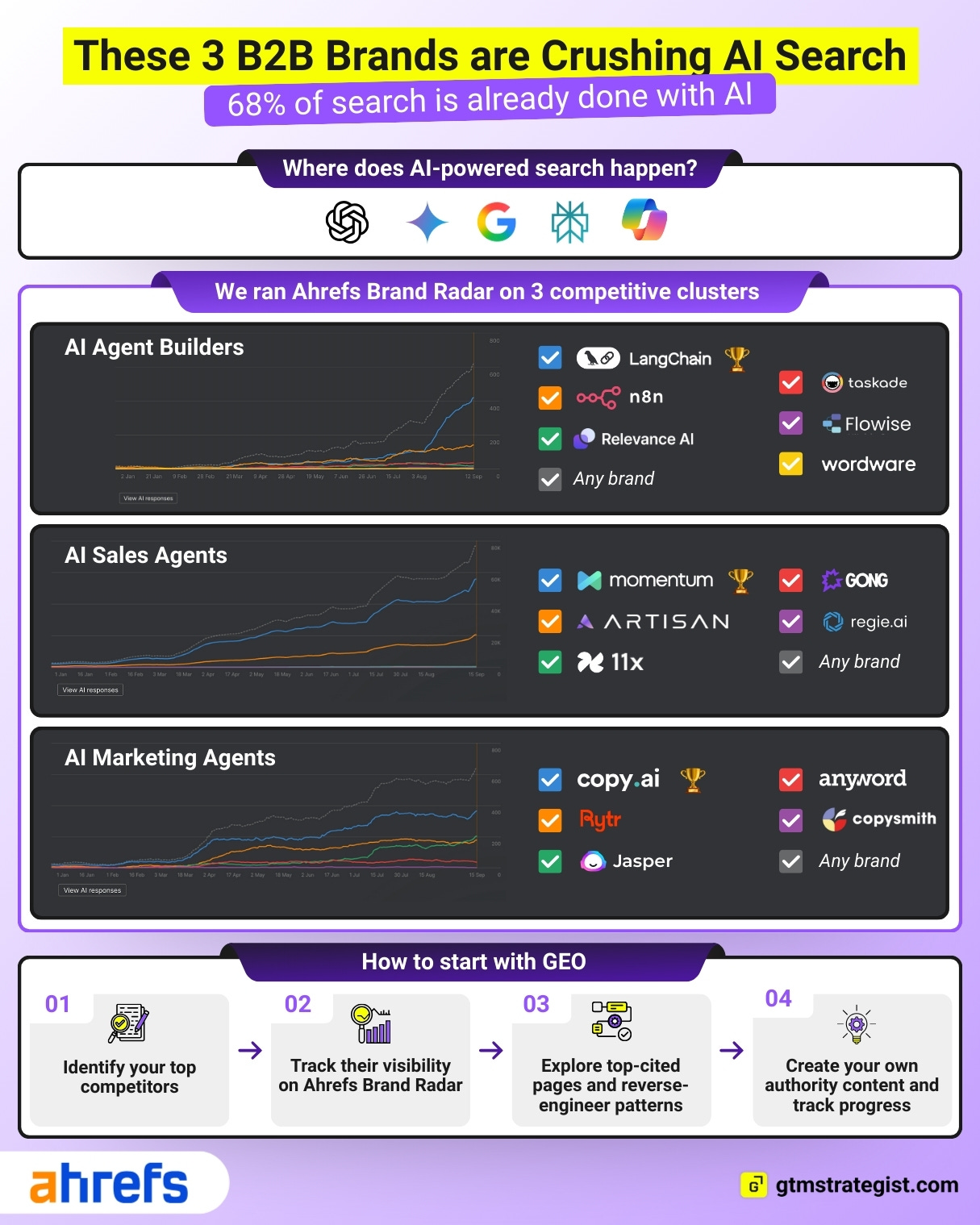

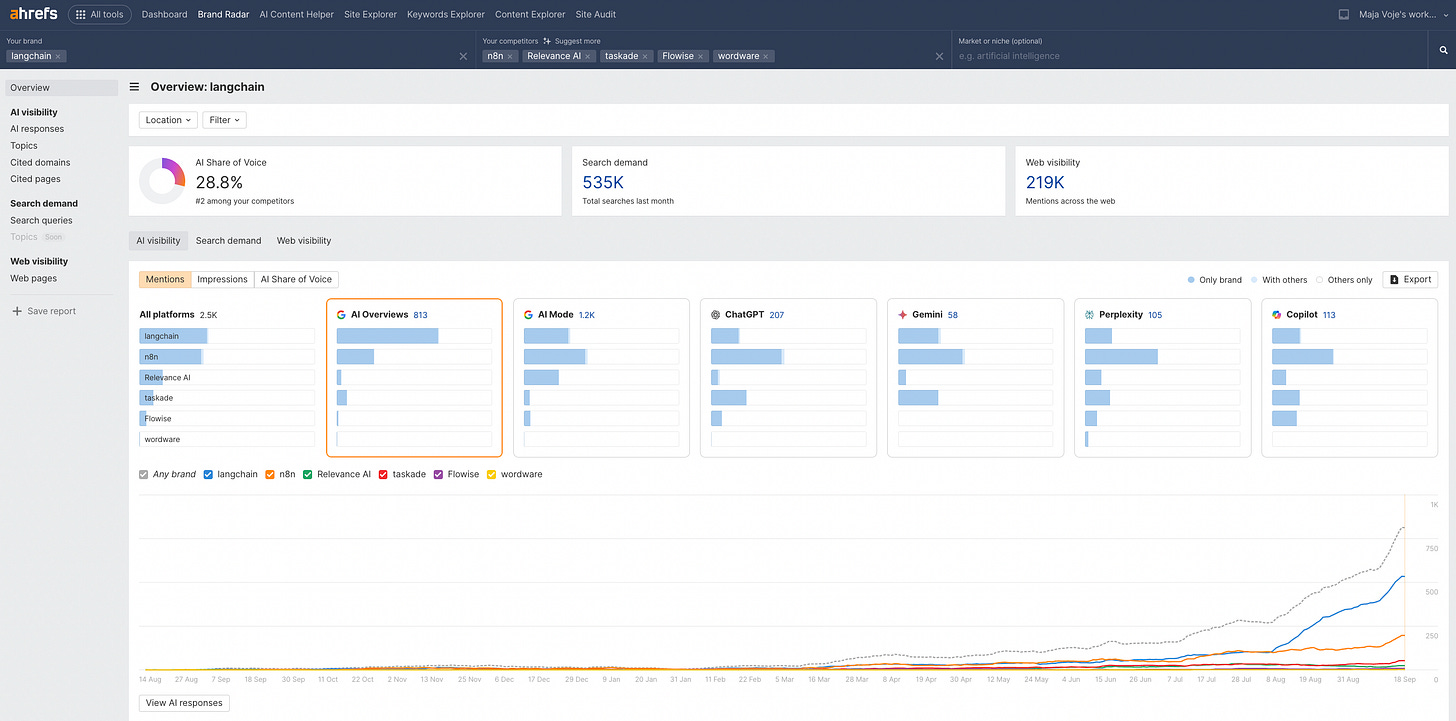
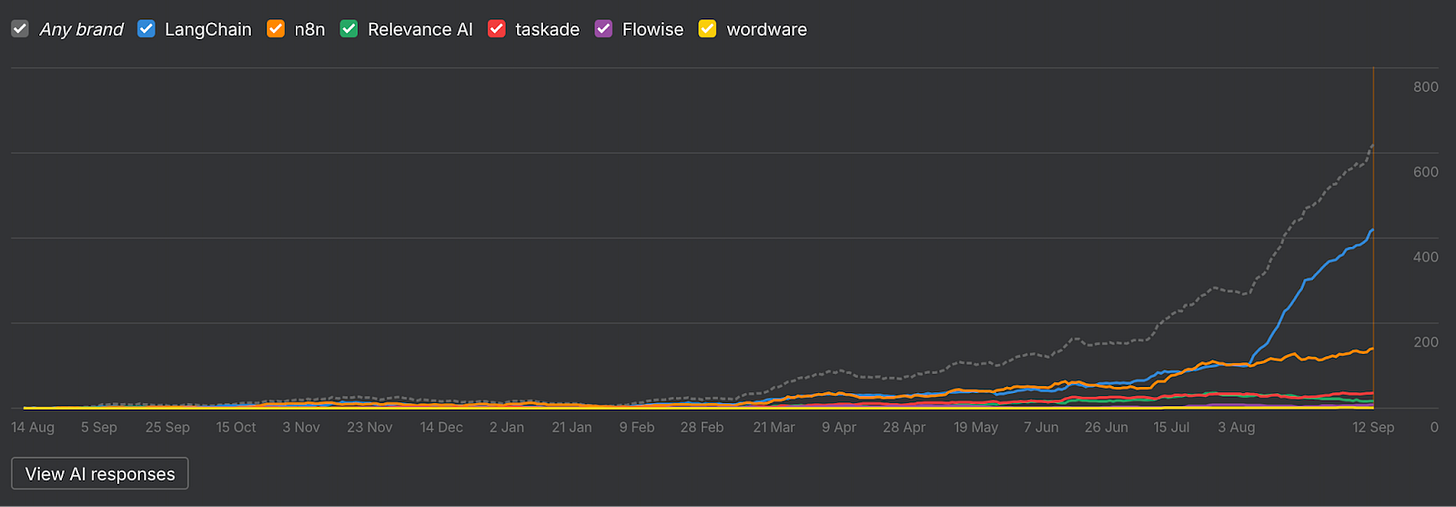


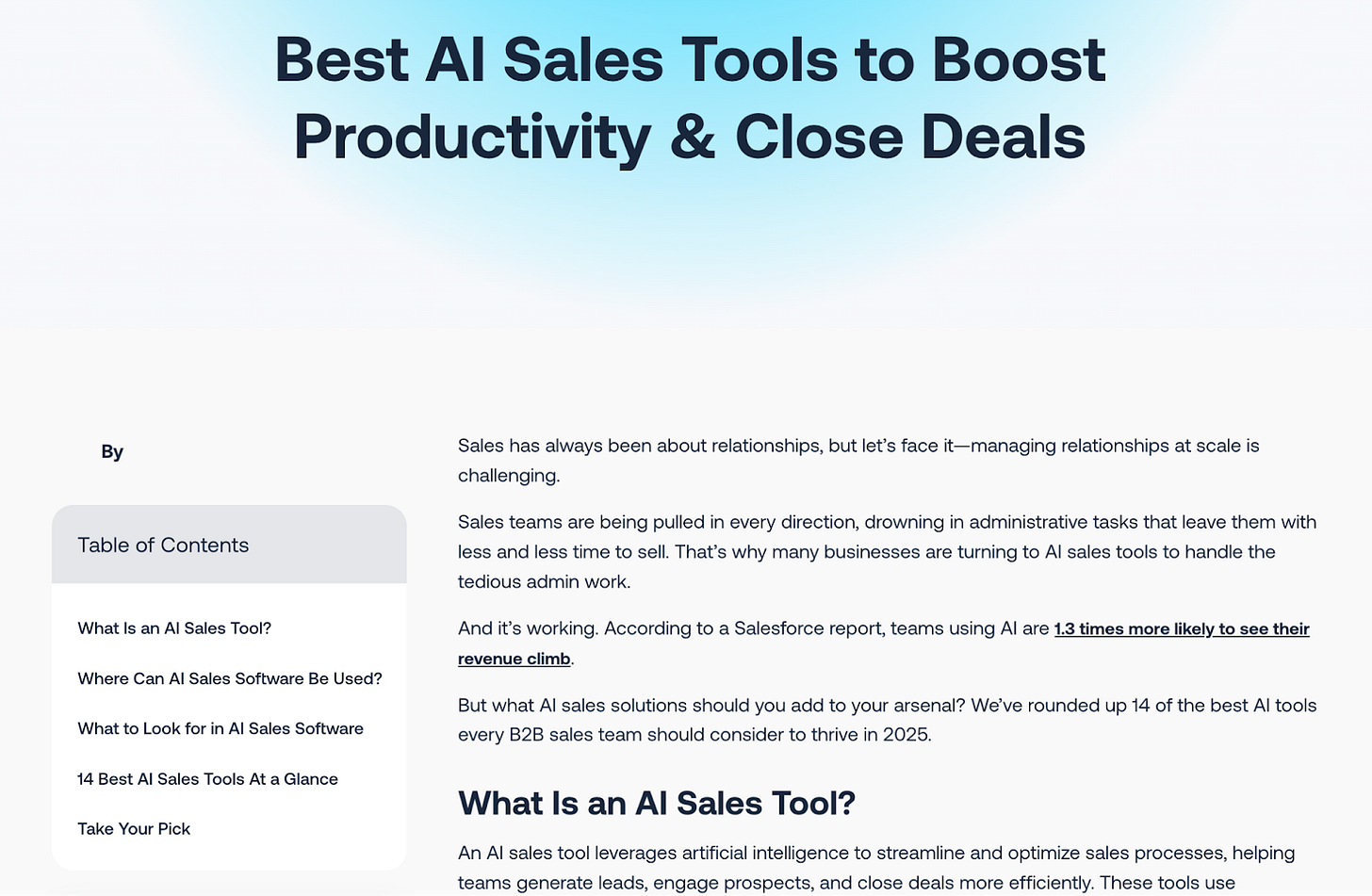



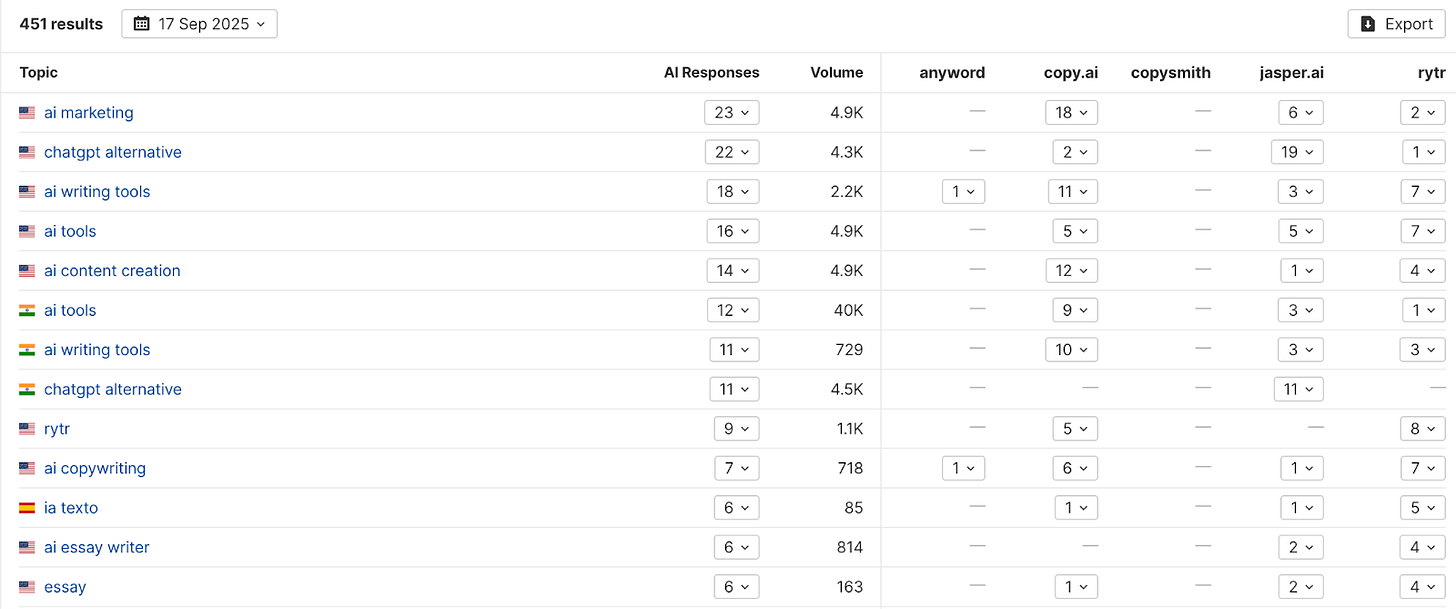
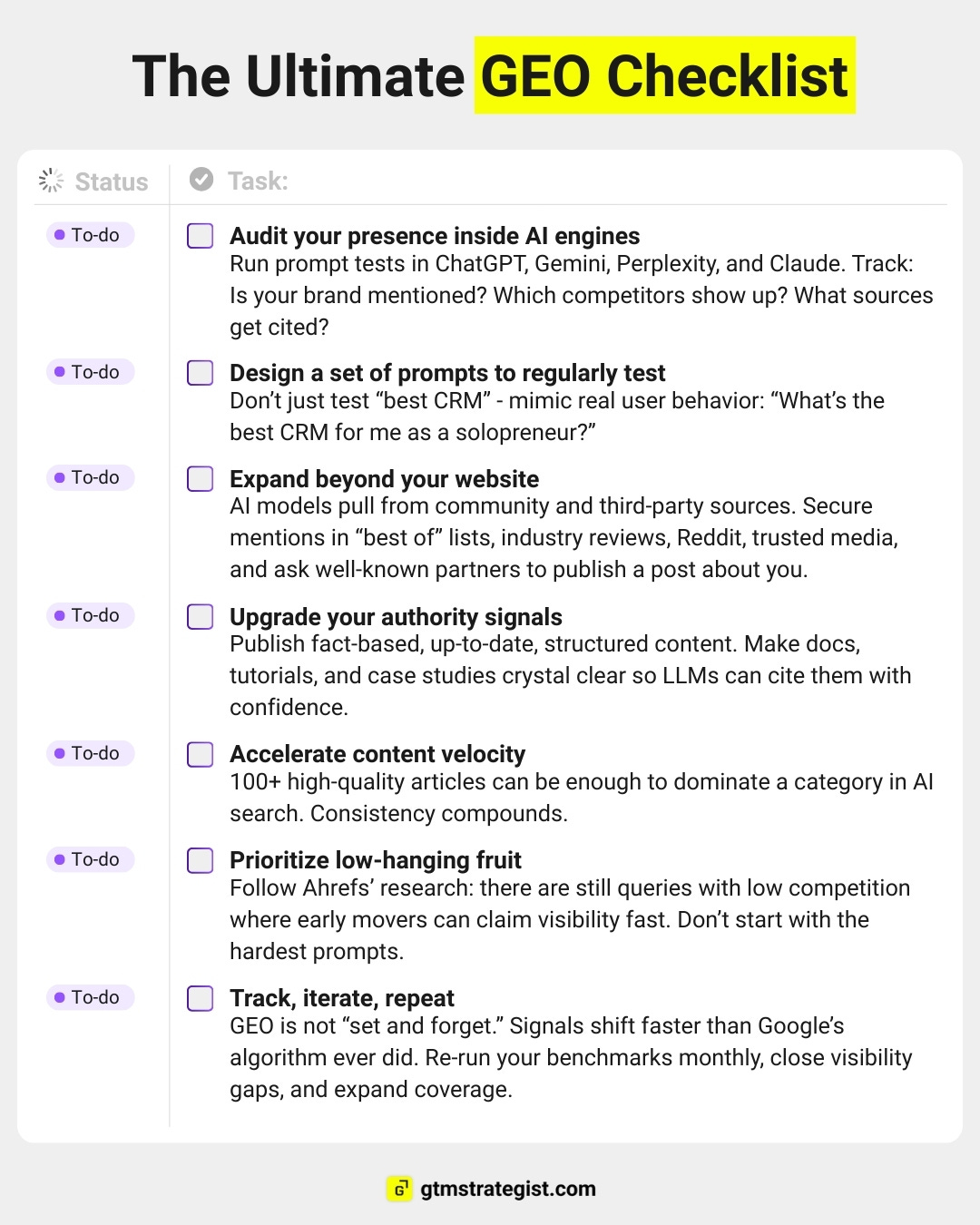
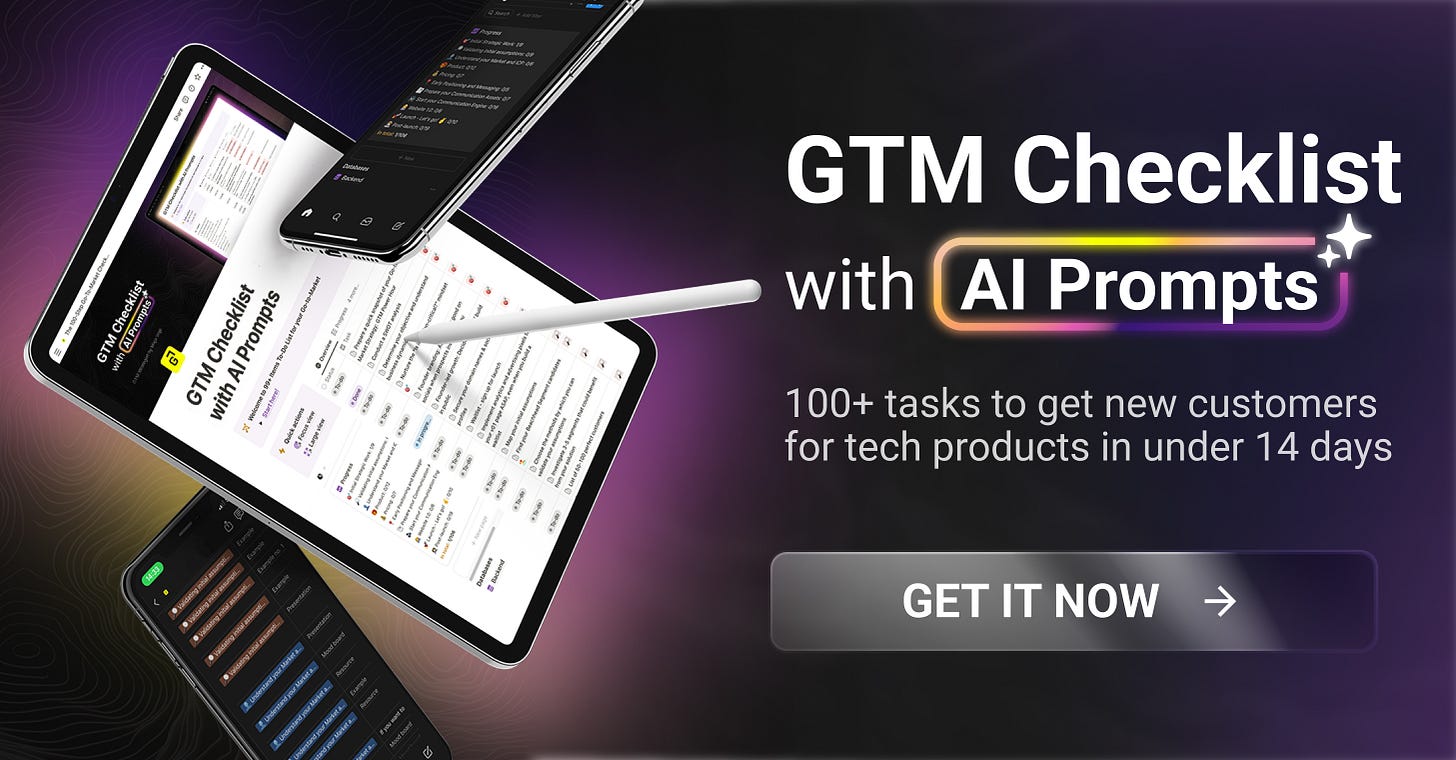
the biggest struggle right now, thanks for sharing!